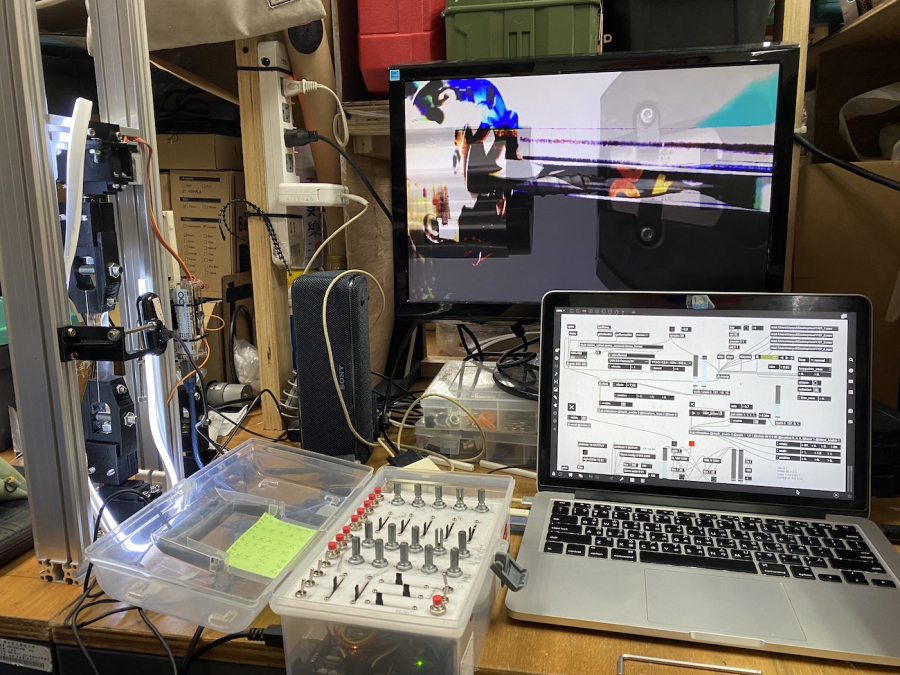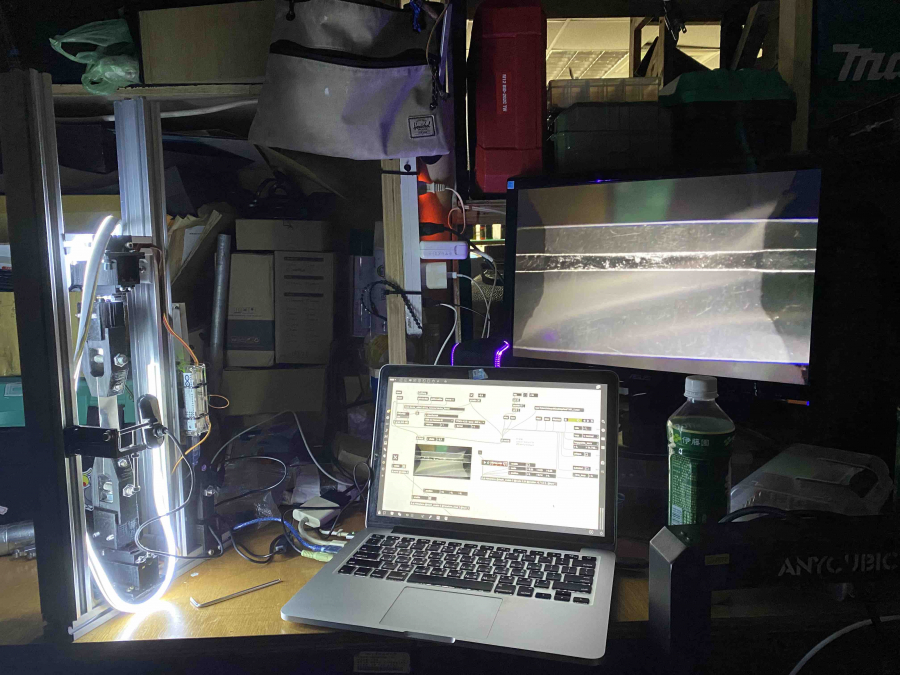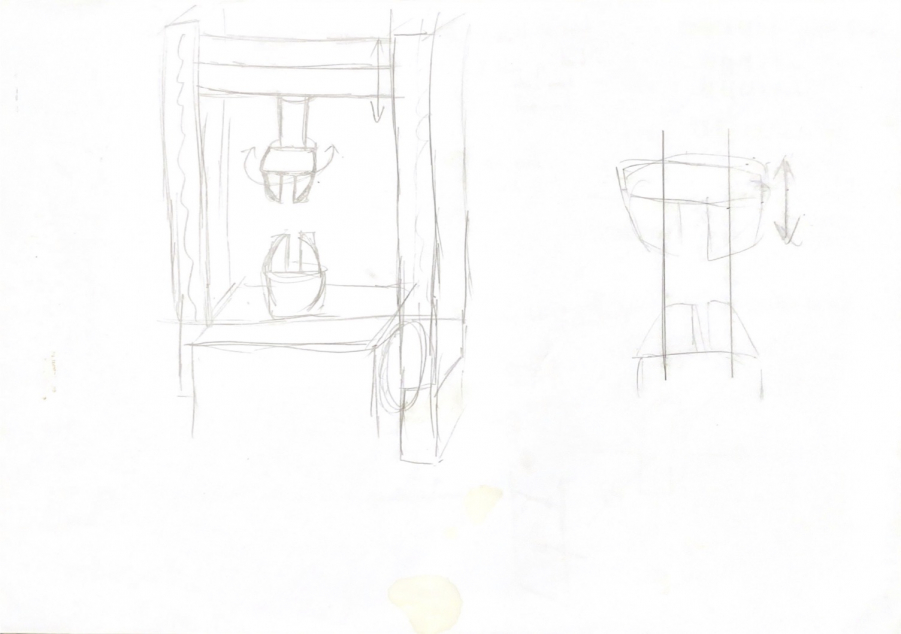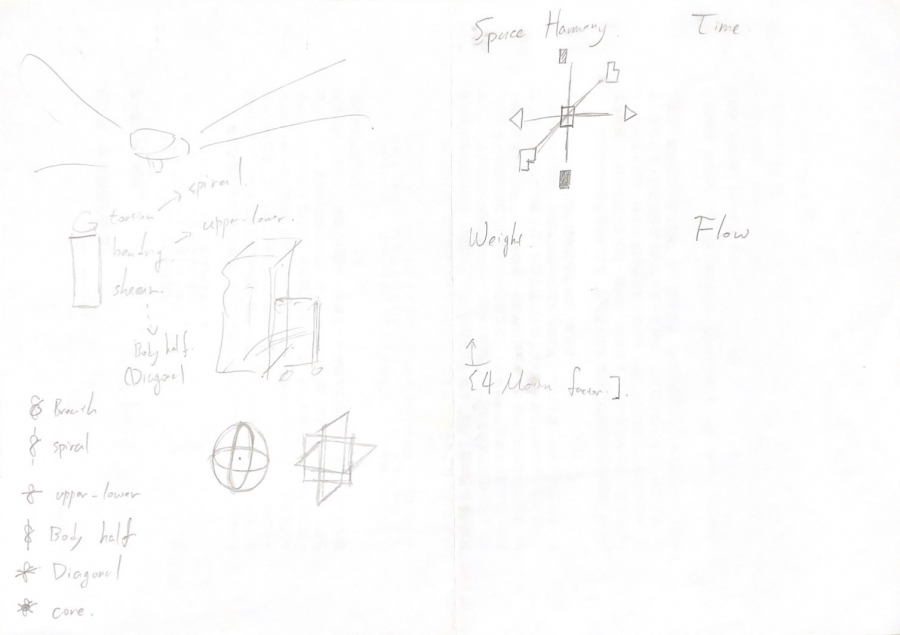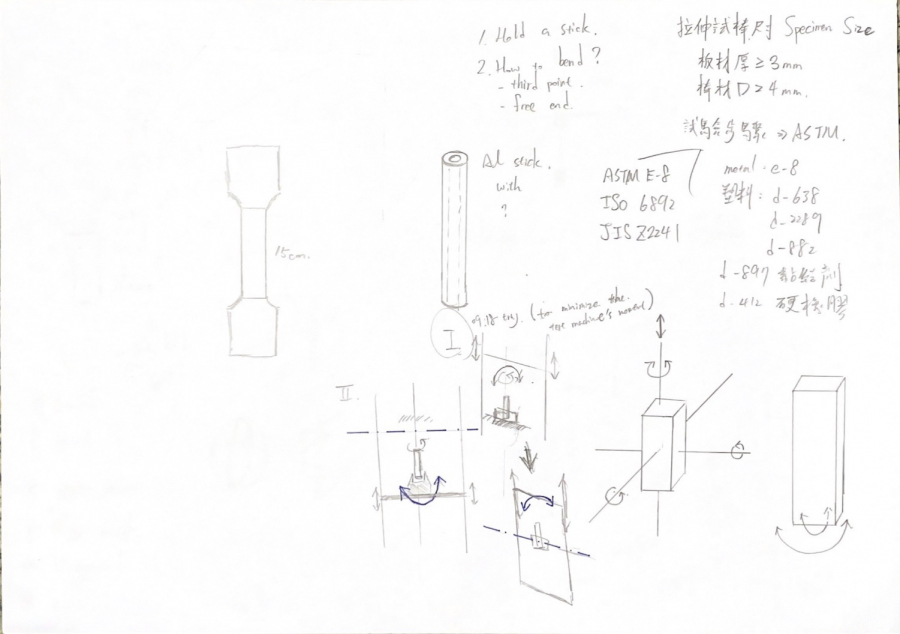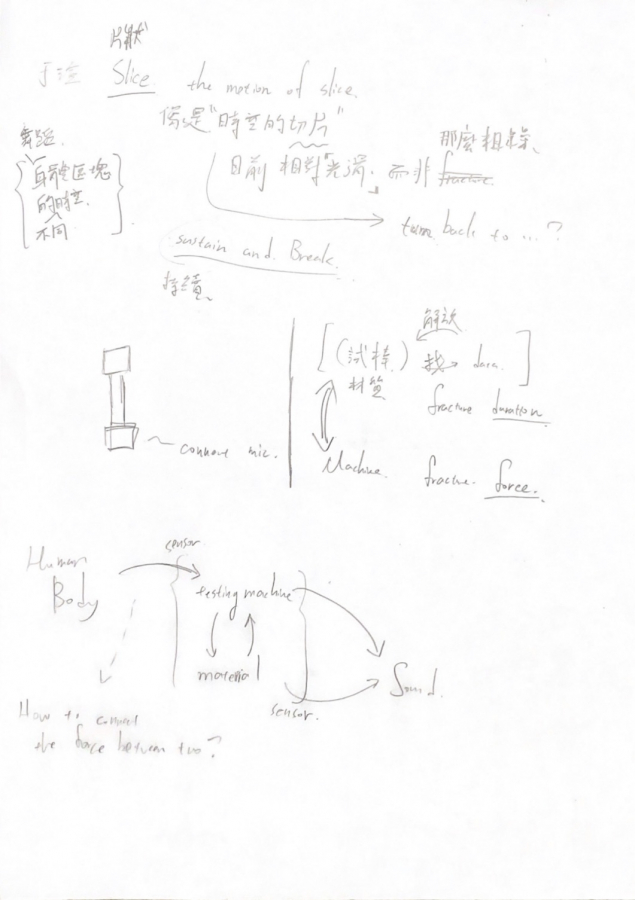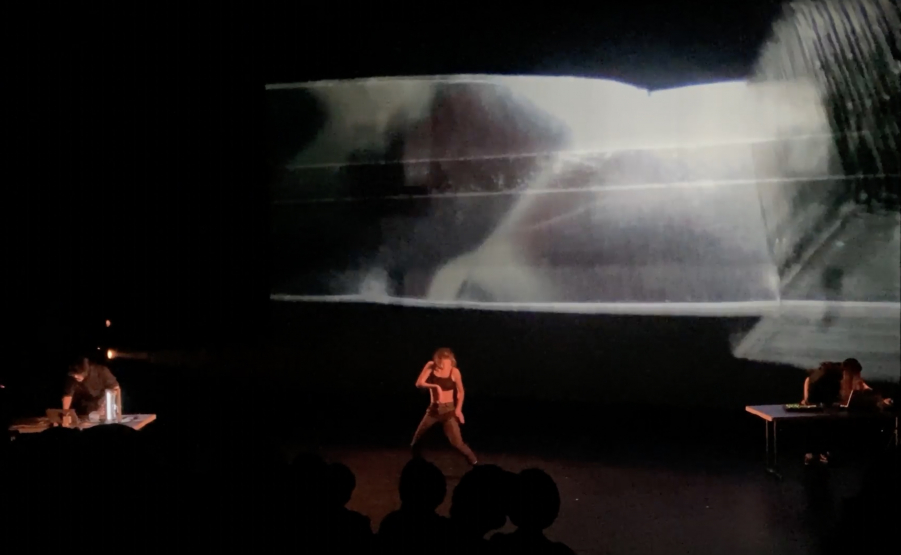
《從__返回到》 - 關於斷裂面到不連續點的研究(2022)
Return__to, Research on Fracture and Discontinuities
December 02, 2022 (2022 Creative Evolution Platform 創意熟成平台)
@臺中國家歌劇院小劇場,臺灣臺中
@Black Box, National Taichung Theater. Taichung, Taiwan
〈關於斷裂面到不連續點的研究〉
斷裂面(Fracture)作為曾經其在場的證據,亦是事件或是力做用完後所遺留的,但它並非只是一個靜止的斷口,而是把整個事件發生的過程記錄在我們所能看見的物體上,對於斷裂面的分析研究就像對於時空進行逆向的探索,但我們真的回「到」了嗎?又或者我們「能」回到嗎?
「返回」是以連續的時空作為前提,當架構出這一事件以時間為基底的函數時,我們不只是能移動到特定的時間點取得當前狀態,更可以預測、回顧甚至超越我們所能觀察,譬如透過對位移的微分可以得出速度、加速度甚至衝動度。當然這是在各種前提下的理想狀態,我們所常常經歷到的是不斷延展、無法到達終點的過程,如同處在時空的不連續點(Discontinuities),原初的事件以及作用力早已不在,而我們斷裂、殘缺、站在一個無法被左右所逼近的位置,拼湊不出完整的輪廓。正因如此複象得以進入,依循著我們各自的方式修補、還原。
〈Research on Fracture and Discontinuities〉
As presence and remain of an event, fracture serves to indicate the process force once exerted on an object. Yet could we travel back to the original condition by analyzing fractures? Could we travel back to the original point of time?
Return is an action based upon linear space and time. When one tries to map the time domain of a certain event, we expect to trace a certain point of time and even see what we cannot—for instance, if we differentiate displacement three times, we get velocity, then acceleration, and then jerk. However, what one goes through is a deferral process and discontinuity in which the certain point could not be approximated. The original event and its force once exerted does not exist. We experience ruptures and fragments of time, cannot position the discontinuity, and cannot picture the whole event. In that case, doubles are here taken to restore fracture and pictures the original condition.
